What is the Difference Between Photovoltaic and Solar Panels?
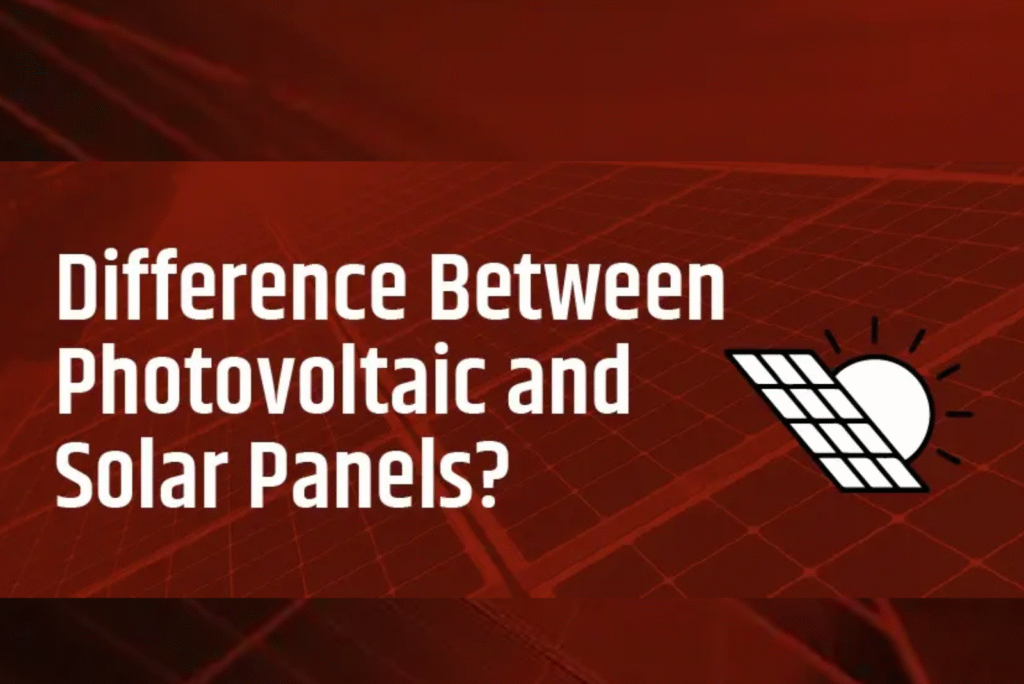
What is the Difference Between Photovoltaic and Solar Panels? Home Blogs Popular Posts All Posts Blog Seasonal Maintenance Tips for Solar… October 6, 2025 Solar Water Pump vs Regular… October 6, 2025 Rooftop Solar vs Ground-Mounted Solar October 6, 2025 Choosing the Best Solar Panel… October 6, 2025 Power Your Future with KLK Ventures Pvt. Ltd. Delivering reliable solar solutions for a sustainable tomorrow. Switch to clean energy and save with us today. Contact US While looking for solar options, it is important to determine the difference between photovoltaic and solar panels, which can be perplexing. These technologies are both intended to use solar energy but do so in different ways for different purposes. This blog will be useful in setting the record straight on these various solar technology inconsistencies and their applications. What Are Photovoltaic Panels? Photovoltaic (PV) panels are created for the purpose of cutting down in aid for electricity as they strive to transform sunlight directly into power. Enclosed within these panels are a large number of solar cells that are built using silicon or other materials. The cells possess the capability to convert light energy into electrical energy, due to the fact that these cells employ sunlight to excite electrons creating an electric current. This is referred to as the photovoltaic effect. PV Panels have become a common commodity in residential homes as well as in commercial buildings. Households often resort to setting these up on their roofs for the purpose of saving money on electricity bills while also being eco friendly. As for commercial buildings, organizations use PV Panels to help power their operations and minimize energy consumption as during their operations. Key Features of Photovoltaic Panels Efficiency Rate: Based on the kind of equipment used, PV Panels are able to convert an estimated amount of between 15% to 22% of sunlight. Flexibility: There are several different places where these panels can be fixed as some of them are mounted on rooftops ground, or are incorporated into building materials. Scalability: Another reason as to why these panels are popular is because they are able to be easily expanded in order to cater to the growing energy needs of people. What Are Solar Panels? To put it simply, solar panels consist of photovoltaic cells or lenticular lenses which collect solar energy to convert it into usable electricity. In the modern day economy, solar panels have shifted into the spotlight because they tend to bring down both energy costs and the carbon footprint to a significant degree. The functionality of a solar panel is not limited to just converting solar energy, there are two different types of solar panels; solar thermal panels and solar water panels. As the name suggests, solar water panels use sunlight to heat up water while solar thermal panels produce electricity. Types of Solar Panels There Are Two Distinct Types of Solar Panels Available One Is Economically Active While the Other Two can be Considered A Passive Approach Photovoltaic panels: These panels serve the purpose of turning solar energy into electricity, which is then further utilized. Solar Thermal Panels: The main role of these is to collect solar thermal energy which then gets transported to a separate fluid, this fluid can then be altered for heating up water or air. Applications of Solar Energy Solar Water Pumping SystemA prime example where solar energy has made a significant impact is a solar water pumping system. With the help of an integrated system, this solar powered water pump is able to efficiently gather solar energy and pump it out. This becomes particularly useful for people residing in rural regions or for agricultural use where electricity can be a problem. You will be able to use the water to irrigate your crops, provide water to livestock and even use it in your household. Commercial Solar Solutions With the help of Commercial Solar Solutions, businesses can utilize solar energy for their business needs. By having solar panels, companies can reduce the cost incurred on electricity and also help in the reduction of carbon emissions. Companies often use on grid solutions where their solar systems are connected directly to the utility grid and when necessary, excess energy is sold back to the grid for other companies, creating new sources of profit for them. Off Grid Solutions Solar energy powered Off-Grid Solutions can be useful for areas that do have access to regular electric systems. These systems charge batteries during sunny days to provide continuous energy during nighttime. For remote homes, cabins or rural areas off grid solar solutions can provide better energy efficiency. This allows these homes or places to become energy independent and are reliable. On Grid Solar Solutions With On Grid Solar Solutions, solar systems have a direct connection with the utility grid. Because of this during times when there is insufficient energy solar panels are generating, homeowners and companies can draw energy from the grid. This situation can happen during cloudy days or at night. In cases there is electricity produced in excess, the electric grid can get it back in exchange for credit or money. Lighting Division The Lighting Division of solar technology centers on solar-powered lighting solutions. These outdoor lights capture energy from the sun through solar panels during the day and can light up an area at night. For outdoors, walkways and even indoors, solar lighting is a reliable and energy conserving solution. Because of not being dependent on the grid, Solar lights can contribute to a decrease in energy costs and carbon footprint substantially. Annual Maintenance Contracts Cleanliness is the top priority, therefore, multiple solar panel owners tend to go for Annual Maintenance Contracts for their systems. Such contracts usually entail inspections, cleaning, and repairs, if required. Maintenance of systems can minimize malfunction of solar panels and ensure maximal electricity output from them. Importance of Maintenance Efficiency: Poor performance of solar panels can be avoided by regularly maintaining them, for instance, through cleaning and inspections. Longevity: Cleaning the panels and replacing minor components
What Are the Uses of Solar Water Pumps in Agriculture?
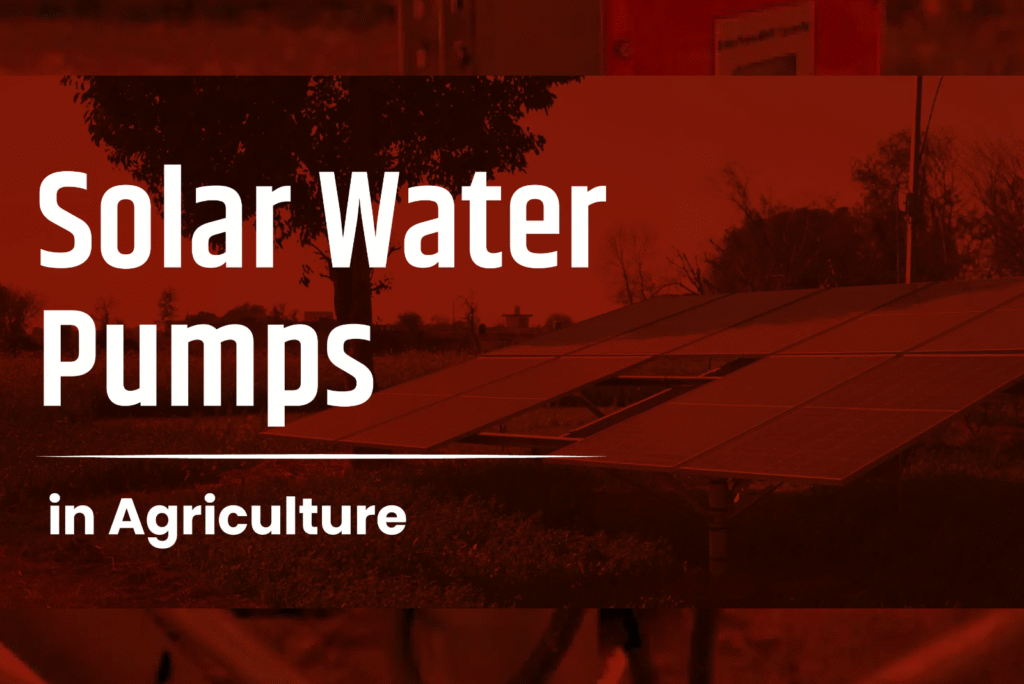
What Are the Uses of Solar Water Pumps in Agriculture? Home Blogs Popular Posts All Posts Blog Seasonal Maintenance Tips for Solar… October 6, 2025 Solar Water Pump vs Regular… October 6, 2025 Rooftop Solar vs Ground-Mounted Solar October 6, 2025 Choosing the Best Solar Panel… October 6, 2025 Power Your Future with KLK Ventures Pvt. Ltd. Delivering reliable solar solutions for a sustainable tomorrow. Switch to clean energy and save with us today. Contact US Agriculture, the one aspect of our economy that’s very crucial, can also benefit from the invention of solar water pumps. Being an important practice and also the livelihood of many, this sector deserves more attention and growth. As we move to more sustainable agricultural practices, solar energy can be incorporated into this to make it better and more efficient. Solar water pumps in agriculture are one brilliant way to do that. Hand pumps or electric pumps can be replaced with efficient solar pumps to save on energy and human efforts. We live in a world that is run by energy. With the rise in fuel and electricity prices, solar energy seems to be a much safer and better alternative. Especially for remote areas where constant grid electricity seems a far-fetched dream, types of solar energy play a major role in creating a better and more fulfilling environment. Let’s understand how solar energy is put to use in agriculture with solar water pumps. What is a Solar Pump? Before understanding why there’s a need for solar pumps, let’s focus on the question: What is a Solar Pump? In very simple words, a solar pump is just like any other pump but instead of being operated through hands or electricity, it works with solar energy. A solar water pump hence doesn’t contribute to polluting the environment, is not an exhaustible source and also reduces your financial burden to a certain extent. A solar (photovoltaic) panel or a solar grid that is made up of several solar cells is responsible for generating electricity and helping run water pumps through it. It can be a real lifesaver if grid electricity options fail out and the weather is not suitable for some time. These solar pumps apart from agriculture, can also be used in homes or other places. Generally, the whole set-up required for these solar pumps involves components like a solar panel array, solar charger controller, water storage tank, fuse wiring, water pump, etc. With KLK ventures, you can rest assured of the whole process being effortlessly completed with minimum effort, energy and time on your part. Uses of Solar Water Pumps in Agriculture Crop Irrigation:The most basic use of solar pumps is for irrigating crops. The water needs of agriculture might not be fulfilled properly due to the inconsistency and sometimes shortage of water in many parts of the world. This is where solar pumps enter the picture. These pumps help farmers distribute water to their fields by drawing water from underground wells or other sources. Different irrigation systems supported by solar pumps: Drip irrigation: Through the drip irrigation system the roots of the plants get watered ensuring there is sufficient water supply and no wastage. Sprinkler irrigation: This system is designed keeping the large surface area in mind, it involves spraying water over the crops. Surface irrigation: This system is typically used for rice and large-scale crop farming where water gets used up in excess. Livestock Watering: Apart from watering crops and plants, solar pumps are also useful in providing water to livestock. Without constant sources of water, farmers need to transport water to pastures for their cattle. Setting up solar pumps in such areas ensures a proper supply of water for animals and cattle. This reduces the manual work for farmers and workers and offers a consistent source of water. Greenhouse Irrigation:Greenhouses provide a temperature-regulated environment for crops to grow. It also requires a constant water supply, solar pumps are what help fulfil the requirement effectively. It is a more cost-effective way to water the crops in the greenhouse. Fish Farming:Solar pumps are useful when it comes to fisheries. Clean water needs to be circulated in the fish ponds regularly so that the fish receive enough oxygen. Solar pumps are used to supply clean water to the fish ponds, this helps in maintaining a good environment for fish growth. Water Storage: Another important function of solar pumps is to fill the water storage tanks which store the water for later use. Solar pumps become useful for times when there are unfavourable weather conditions, ensuring security by collecting water in the storage tanks. 6 Key Benefits of Solar Water Pumps As solar pumps work independently of the electricity grid and fuel, they are highly sustainable for agricultural operations. Some of the benefits of choosing solar pumps are: Renewable in Nature: Solar pumps harness the sun’s energy for its work. As the sun is available almost everywhere it is inexhaustible and clean. Using Solar pumps greatly reduces dependency on fossil fuels and greenhouse gas emissions. It contributes to a greater and more sustainable environment free from the carbon footprint.Cost-effective process: After the initial cost of installing these solar pumps, in later stages, their operating cost turns out to be minimal. These are independent of fuel and do not require any electricity thus reducing bills and expenses. This is mostly effective in remote areas where fuel transposition and grid connectivity are not possible.Requires Low-Maintenance: As compared to other conventional pumps, solar pumps require fewer moving parts. There is a low chance of any mechanical failures and this reduces the cost of maintenance and all the time wasted in repairing. This saves farmers from relying on external technicians that would cost a fortune to them. Increase in Crop-yielding: Even in areas that lack electricity facilities, solar water pumps are proven to be very beneficial as they provide consistent and reliable irrigation to the farmers. They even support multiple cropping facilities, very efficiently increasing agricultural productivity. These solar-powered water pumps
7 key renewable energy sources
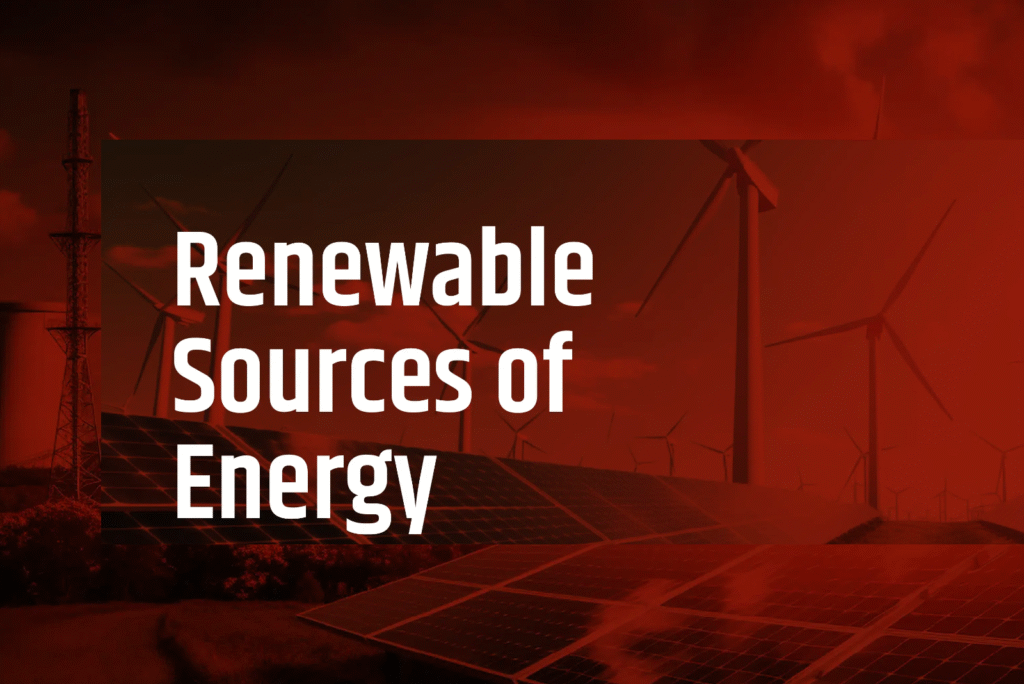
7 key renewable energy sources Home Blogs Popular Posts All Posts Blog Seasonal Maintenance Tips for Solar… October 6, 2025 Solar Water Pump vs Regular… October 6, 2025 Rooftop Solar vs Ground-Mounted Solar October 6, 2025 Choosing the Best Solar Panel… October 6, 2025 Power Your Future with KLK Ventures Pvt. Ltd. Delivering reliable solar solutions for a sustainable tomorrow. Switch to clean energy and save with us today. Contact US We are highly dependent of sources of energy and are on the brink of suffering due to scarcity of the same, are we not? Not to mention the negative effects these sources of energy pose to the environment. In this world that is driven by energy and a world where everything seems to run on energy, we require sustainable and nature friendly sources, which are scant. This is precisely where renewable sources of energy come into play. With its cost effective and clean nature, renewable energy is the solution to future problems. It is fully successful in addressing the energy needs. In this fast world, more and more people are adopting renewable energy sources in their day to day and considering sustainable ways of living and these sources play a key role in it. As mentioned before, let’s consider what renewable energy is in a more friendly so as to what it benefits to the environment. 7 Renewable Energy Sources So, we go on to discuss all the seven types of renewable energy sources in detail. Solar Energy Solar energy requires sunlight to create heat or electricity using photovoltaic (PV) cells or thermal systems. This form of energy is one of the most plentiful resources around and has more than one application. Solar panels are installed on roofs, and fields or large scale farms, and are utilized to power large scale industries or even smaller appliances in residences. There are three different types of systems: hybrid, on-grid, off-grid solar power systems. Advantages: Sustainable: Energy from the Sun is always available making it possible to produce energy whenever it is required. Reduction in Electricity Bill: It reduces dependence on grid electricity while cut down the electricity costs significantly. It has low maintenance costs: Thanks to the technology and support provided, this system requires very little maintenance. It lowers fossil fuel consumption: People tend to refrain from using fossil fuels that can run out, because of the large accessibility and convenience solar energy provides for fulfilling their basic needs. Wind Energy Electricity is produced from wind energy using large wind turbines. Wind turbines are used in open fields such as land. These have multiple blades which turn the shaft that drives the generator, when the wind blows and rotates the blades on the wind turbine the electricity is produced. Benefits: It is Abundant: In every corner of the globe, wind is in ample supply, hence it is not possible to run out, furthermore it is easy to use power. It is Economically Profitable: Following the installation of wind turbines on farms, the cost of generating electricity will be reduced. Such turbines work cheaply too. It is Eco-Friendly: Wind energy does not emit any pollutants or harmful substances which makes it even cleaner than other sources of energy. Land Utilization: Grazing land and already established farms in windy areas can have wind generators fitted on them. Hydropower The operation of a hydroelectric power plant is based on the potential energy or kinetic energy of the water that rotates a wheel. The simplest energy source known is water hydropower used to produce power by building dams on rivers to create reservoirs and releasing the water through turbines to generate the required electric power but this hydropower source seems too simple. Benefits: Energy Reservoir Component: The reservoir serves as an energy reservoir. Therefore electricity can always be generated when needed. Durability: With adequate maintenance, hydroelectric power projects could last for a very long time, up to centuries. It’s Reliable: Hydropower facilities have a tendency to work the same way. They always produce electricity. It’s Not a Dirty Option: Making electricity from water power creates much less carbon emissions when put alongside fossil fuels. Geothermal Energy To put it simply, Geothermal Energy is the heat that originates from within the Earth. This form of energy can be used for heating purposes or it can be transformed into electricity as well. Benefits It is a Clean Energy: Contrary to fossil fuels, Geothermal Energy Takes Clean Energy Because They Have Very Low Emissions Of Greenhouse Gases It is Reliable and Consistent: Unlike fossil fuels, the geothermal plants do not face external limitations, hence providing electricity on a regular basis. It is Space Saving: When compared to other power sources, geothermal plants are more compact because they do not take up as much space, minimizing environmental problems. It is Versatile: Geothermal Energy is not only useful for the generation of electricity but also for direct heating, industrial uses and more. Biomass Energy Biomass is a sustainable energy form derived from organic materials such as wood, animal, or agricultural waste. Biomass can be used for heating or electricity generation. Furthermore, biomass can be converted into biodiesel and ethanol, which are biofuels. Advantages of Biomass Energy: It is sustainable: Biomass energy can easily be created, unlike fossil fuels, which take ages to be replenished. It lowers pollution: By using organic waste, environmental pollution can be significantly reduced because these wastes would have otherwise contributed to pollution. It is reliable: Biomass energy efficiently responds to demand. Further, biomass energy can be generated according to further demand, which makes it a reliable resource. It increases land quality: Biomass energy techniques can produce biochar-like byproducts that may improve soil. Ocean Energy There are three types of ocean energy: Wave, Tidal, and Ocean Thermal. Ocean energy is described as all the energy that comes from the sea. The movement of the ocean water is used to create electricity. Advantages: It Has A Long Lifespan: If an ocean power plant is kept in good
On-grid vs Off-grid Solar Power System
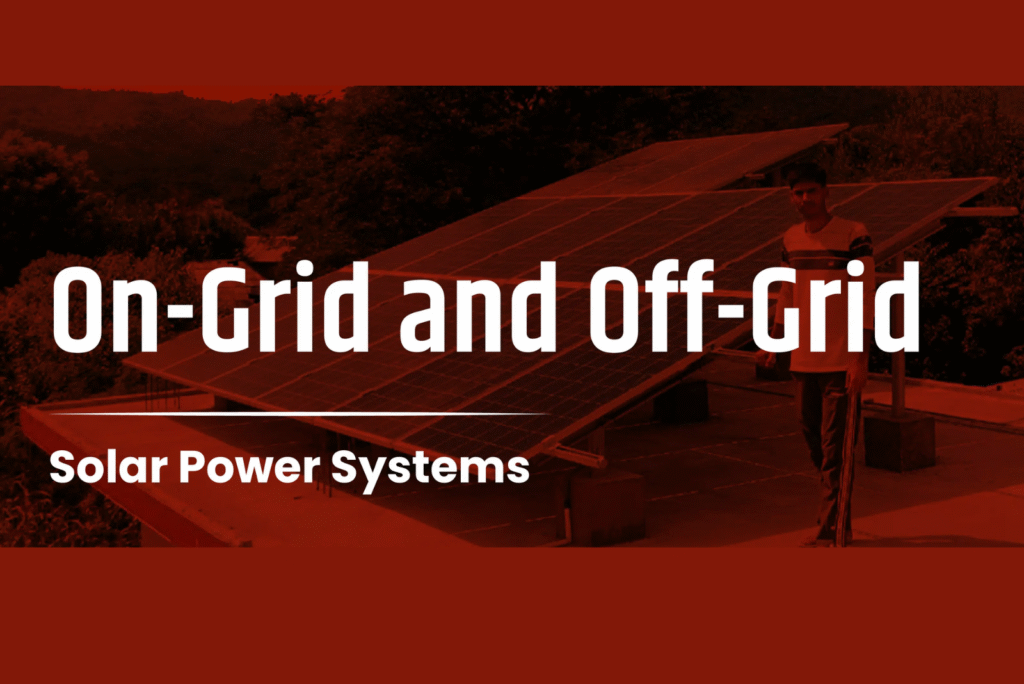
On-grid vs Off-grid Solar Power System Home Blogs Popular Posts All Posts Blog Seasonal Maintenance Tips for Solar… October 6, 2025 Solar Water Pump vs Regular… October 6, 2025 Rooftop Solar vs Ground-Mounted Solar October 6, 2025 Choosing the Best Solar Panel… October 6, 2025 Power Your Future with KLK Ventures Pvt. Ltd. Delivering reliable solar solutions for a sustainable tomorrow. Switch to clean energy and save with us today. Contact US Solar Energy is the form of energy that comes from the sun. There are two main types of solar energy: Photovoltaic (PV) and Solar Thermal Energy. This energy is replenished constantly, and being renewable it is proven to be eco-friendly as it does not produce any harmful or greenhouse gases. The sun’s energy is harnessed through on-grid and off-grid solar power systems that convert it into electricity or solar thermal systems that help produce heat. The electricity generated through on-grid and off-grid solar power systems is then used for many purposes like industrial and residential uses and also for large-scale solar farms. With such solar technologies used in the right way, sustainable living becomes possible. Before we come to the workings of solar power systems, let’s go through the multiple advantages solar energy has. What are the Advantages of Solar Energy? Promoting the use of solar energy helps with the reduction of carbon footprint and emissions from fossil fuels making it a more sensible and healthier option for the earth. Considering it is a renewable source of energy there isn t any worries of it being depleted. Other than the existing benefits of energy, in the long run solar power energy helps in reducing or lowering energy and power cost. It is practical and easy to reach since there is always an option that can be made use of at any time. Solar Energy ensures that the environment that humans live in is pollution free thus making it cleaner, sustainable and healthier. What is a Solar Power System? A solar power system is made from several components. And the first component are solar panels; these panels absorb sunlight and based on silicon cells split electrons to create direct current (DC) electricity. The inverter then converts the current to an Alternating current in order to be used in home appliances and the electric grid. If you want to Know how solar panels work kindly check out the work on solar panels” Types of Solar Power Systems On-grid (Grid-tied) Solar Power System Off-grid Solar Power System Hybrid Solar Power System What Is An On-Grid Power Supply System? An On grid or Grid tied solar power system is usually used to connect to a primary electricity grid also known as the local electric grid. On-grid solar power systems primarily consist of power utility grids, solar panels, and inverters. When the solar cells receive sunlight, they generate direct current electricity, which is then supplied to inverters that turn D.C. into A.C electric power, that can be used in homes and businesses. The power generated from the solar panels is consumed in the house or business first, then the surplus electricity is transferred to the Grids. When the electricity generated by the solar panels is insufficient, the power grid will be used to supply the electricity Advantages of the Grid-tied Solar System Carbon-Free: It is extremely sustainable as it decreases reliance on fossil fuels and in a way reduces the carbon footprint left behind. No use of Battery Storage: There is no requirement to install and deal with the devices as all the information and support is provided on the grid. Aid of Grid: It assists in ensuring sustainable development, restoring the extra energy transferred back to the grid and therefore enhancing the energy supply. Economical: This is among the best economical ways of curbing our utility bills as we are producing our electricity and getting paid for surplus energy. Uses of Grid Connect Solar Power System Residential Buildings: It helps in servicing houses with the use of solar energy, and surplus energy generated may result to more credits, thereby lowering electricity payments. Farming Sector: This is very useful in practicing farming activities and undertakings without worrying about incurring high electricity costs. Industrial Units: This lowers the total expenses which are needed to perform routine activities in respectively offices, industries and huge malls and encourages environmental friendliness. Details of Off-Grid Solar Power System A Solar power system that works without being connected to the electricity grid is called an Off grid system. The main components of such a system are solar panels, an inverter, charge controllers, and storage batteries. Such systems are used in areas that have contrasting climates as they can operate without electricity grids. They utilize solar energy for power as well as storage batteries. Solar panels are installed in a building’s roof. The sunlight absorbed by these panels is converted into direct current which then through the inverter is changed into alternating current and supplied to electricity panels. Hence, electricity generated through solar panels can be used at home or at the place of work. If solar panels do not generate enough electricity due to sunlight being unavailable, the energy stored in the batteries is used. A charge controller has the function to monitor and regulate the flow of energy from the solar panels to the batteries to prevent damage. Disadvantages of Off-Grid Solar Power System Independency- Off grid systems do not depend on the local electricity grids and are self sufficient systems devoid from any grid failures. Environmentally Friendly – As they completely eliminate the dependency on fossil fuels and minimize the carbon as well as other harmful emissions They only depend on renewable solar energy or storage battery for electric power, they completely do away with fossil fuels. Cost-effective – While the installation of a solar power system could incur some initial expenses, utilities and bills are greatly minimized in the long-term. Applicable to remote areas – Because setting up a grid system within such areas incurs high costs and is very complex, this system is quite
Off-Grid Solar Power Systems Explained
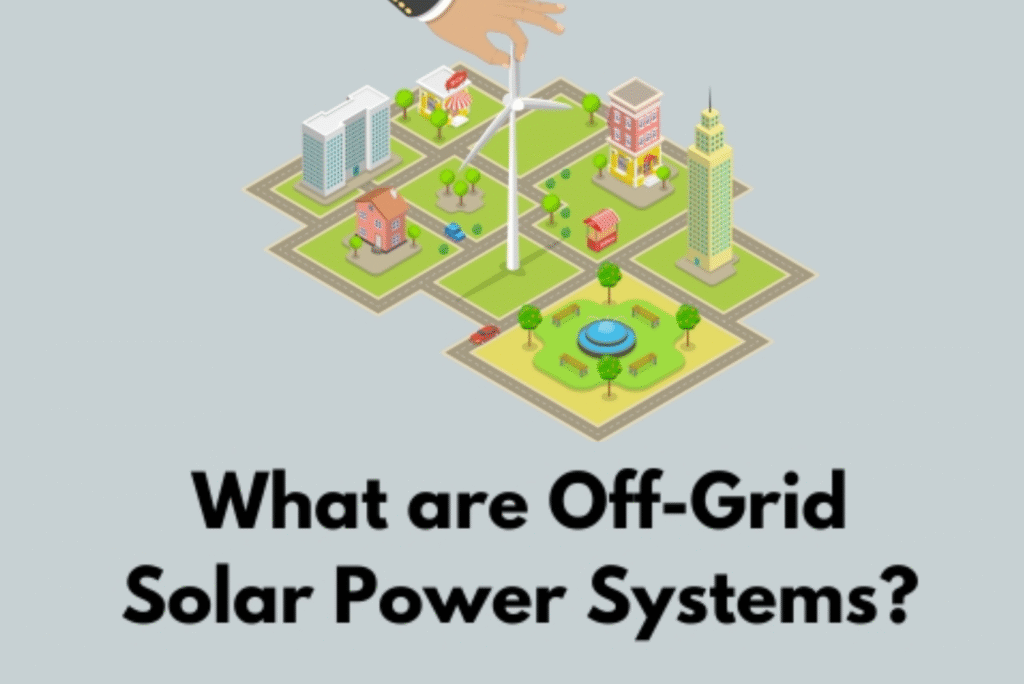
Off-Grid Solar Power Systems Explained Home Blogs Popular Posts All Posts Blog Seasonal Maintenance Tips for Solar… October 6, 2025 Solar Water Pump vs Regular… October 6, 2025 Rooftop Solar vs Ground-Mounted Solar October 6, 2025 Choosing the Best Solar Panel… October 6, 2025 Power Your Future with KLK Ventures Pvt. Ltd. Delivering reliable solar solutions for a sustainable tomorrow. Switch to clean energy and save with us today. Contact US A solar power system works by converting the energy of the sun into electrical or heat energy. This takes place with the help of solar panels made from semiconducting material, which, when exposed to sunlight, emit electrons and produce an electric charge. These panels can be small in size when installed on rooftops or as large as solar farms covering stretched-out rural lands. There are three types of solar power systems each with a unique power generation and storage experience. They are: Grid-tied Solar Power systems Off-Grid Solar Power Systems Hybrid Solar Power Systems A grid-tied system, connected to the public electricity grid, generates power for homes and businesses while sending back any excess. An off-grid system provides power to remote locations without access to the grid. A Hybrid power system is connected to the grid and provides power if the grid goes down, using a battery. Off-Grid Solar Power SystemsAs the name suggests, Off-Grid Solar Power System implies living off the grid, emphasizing sustainable goals. This system stores power in batteries after generating electricity and operates independently from the power grid. During rainy or winter seasons, when the other grid systems struggle to function independently, off-grid systems can work efficiently with even a small amount of sunlight.When a solar panel produces more electricity than demanded, off-grid systems can store this extra energy in solar batteries. It is with the help of these solar batteries only that it generates more power. These solar batteries are crucial for generating power, especially for businesses that cannot function without electricity, even for short periods.An off-grid solar power system should be constructed in such a manner that it has enough capacity or power to work throughout the year, especially during alternate days. Customers should not dismiss it as expensive because it saves money in many other areas. The basic requirement for operating this type of solar power system is a solar panel. Once that is available, power is easily generated which can charge a solar battery.The electricity is then produced by using an inverter and used for household work or business requirements. When connecting to the electricity grid becomes difficult, off-grid systems help people enjoy power without worrying about monthly electric bills. The system can generate from 100 watts to 5 kilowatts of energy, depending on the size and area of installation.The important components required for installing an off-grid system are solar panels, charge controllers, batteries, and inverters. If we maintain these components carefully and correctly, this system is highly beneficial for energy independence. Let us understand these key components in detail. Key components of an Off-grid systems Mentioned below are six key components of Off-grid systems: Solar panels: Also known as Photovoltaic panels, which absorb sunlight and convert it to electricity. The requirement for the panels’ size and number you need is based on your energy consumption levels.Charge regulator: This equipment oversees the voltage and current that goes between solar panels and batteries. The regulator is the one that prevents the batteries from being overcharged and guarantees that the charging process is done correctly and safely.Batteries: They store the energy obtained from solar panels during times of little or no sunshine for consumption at a later time. The capacity of a battery is crucial in ensuring an uninterrupted power supply.Inverters: It is a device that alters the direct current coming from the batteries to the alternating current that most household appliances and gadgets are designed to utilise for their normal operation.Wires and other components: It refers to all cables, connectors, and fuses which must be installed alongside the panels and inverters. Grounding ensures safety by preventing electrical hazards.Monitoring system: It is a device that is used to measure and observe the performance of PV components like arrays, electrical cabling, storage batteries, and other types of equipment. The data, such as the kilowatt-hours of energy generated, fed to the grid, the battery status, and overall system health, is captured via the system, which enables better control and maintenance of the solar energy system. Applications of Off-Grid Solar Power Systems Off-grid systems are highly recommended due to their use of clean and renewable sources of energy. They have numerous applications as discussed below. Functions independently: The basic use of such a system is that it provides power generation in remote areas where infrastructure facilities are minimal and electricity grid connectivity is absent. While other solar power systems function efficiently only in the presence of sunlight and start fluctuating in its absence, off-grid systems can help even during landslides or natural disasters. Telecommunication towers: They are also beneficial for telecommunication equipment like cell towers and satellite stations which provide reliable electricity.Agricultural purposes: Solar-powered water pumps, with the help of off-grid systems, are utilized for irrigation, watering, and drinking water supplies.Electricity supply: Solar-powered street lights are increasingly used nowadays, helping reduce energy costs and increase sustainability. In remote areas, off-grid systems provide electricity to schools, hospitals, clinics, and other such facilities.Vehicles and Appliances: Nowadays, off-grid power systems are also used innovatively in vehicles and appliances like solar scooters, solar boats, solar bikes, and solar drones.Remotes areas: Most importantly it serves as a power backup for areas that experience frequent power cuts. Advantages of Off-Grid Solar Power System An off-grid solar power system can totally eliminate your monthly electricity bill because it disconnects you from the electricity grid. Installing it means a holiday from receiving monthly bills from your electricity company. As solar power is a clean, renewable energy source, it diminishes carbon emissions resulting in a better environment and future. An off-grid solar power system
Solar Cell Types: An Overview
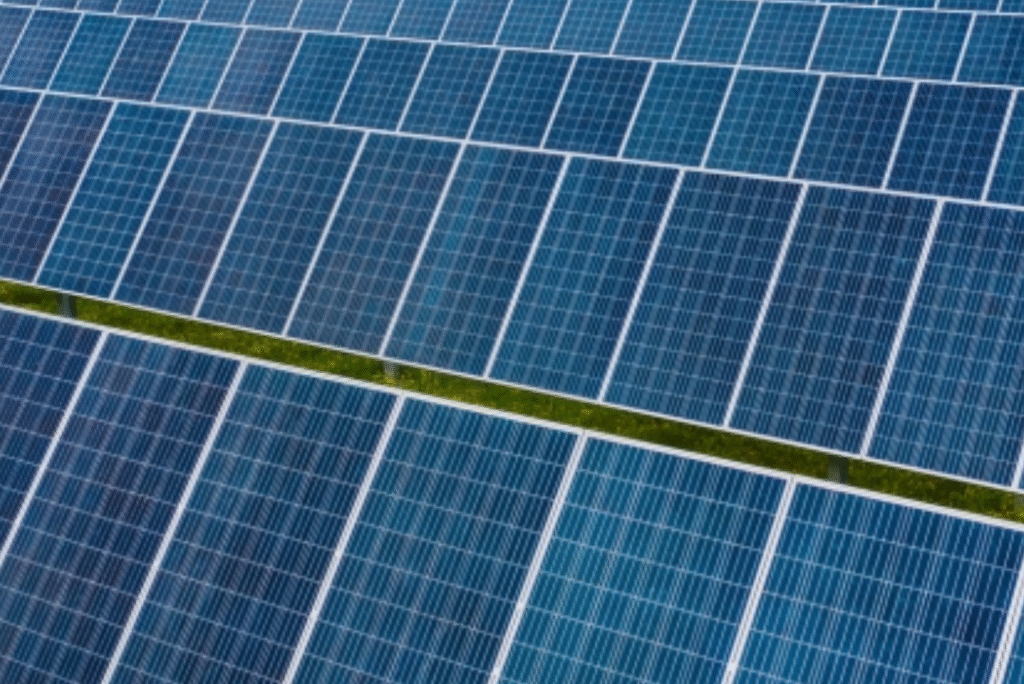
Solar Cell Types: An Overview Home Blogs Popular Posts All Posts Blog Seasonal Maintenance Tips for Solar… October 6, 2025 Solar Water Pump vs Regular… October 6, 2025 Rooftop Solar vs Ground-Mounted Solar October 6, 2025 Choosing the Best Solar Panel… October 6, 2025 Power Your Future with KLK Ventures Pvt. Ltd. Delivering reliable solar solutions for a sustainable tomorrow. Switch to clean energy and save with us today. Contact US Solar energy is the call of this century. Amidst rapid urbanisation and increasing use of non-renewable resources to achieve modern development purposes, solar energy as a cleaner and greener alternative is picking up supporters. Apart from not harming the environment, types of solar energy systems are often deemed to be better for certain kinds of industrial and household uses. In this blog, we will dive deep into the unit that makes up a solar energy system. We will learn about solar cells and how they function. What is a Solar Cell? A solar cell, mostly referred to as a photovoltaic cell, is the basic unit of a solar energy system. It’s the fundamental component through which the energy of the sun is gathered and used by people. A solar cell converts the energy of light to electricity. Electricity can be used for a number of things, even for running water pumps! For more information regarding the same, read What is a solar water pump? Solar cells are mostly made from crystalline silicon to boost efficiency. They don’t use chemical compounds like our day-to-day batteries. Solar cells work using the photovoltaic effect and several such cells are incorporated. Sunlight is composed of photons that carry energy. The combined output of many solar cells can be used for driving many appliances in your home. On a much larger scale, applications in the form of solar furnaces can derive turbines or smelt metals. Not limited to just generating electricity, the energy can be stored in batteries for future use. How a Solar Cell Works A Photovoltaic (PV) cell, or solar helps to convert light energy into electricity through the photovoltaic effect. The common silicon cell on average produces around 0.5 to 0.6 volts of open circuit voltage. They can even work in artificial light. A photovoltaic cell can also be used to detect light or electromagnetic radiation, in addition to electricity generation. The operation of a PV cell requires some conditions. The absorption of light generates unbound electrons and plasmons. This is followed by the separation of charge carriers of opposite types (p-n types). For the next step, the carriers are moved to an external circuit. Silicon is used in these cells because of its properties as a semiconductor that exhibits photovoltaic effects. The electricity generated by solar cells is direct current which is converted to alternating current for use in homes or businesses. Solar Cell Types Solar cells come in different varieties and it’s often the scale and needs for which a solar system is being established that determines which type of solar cell would one go for. Monocrystalline cells Monocrystalline cells are made from just one silicon piece that is monocrystalline, hence the name. As highly efficient cells made from single silicon crystals, they require less space. To the top of this list of advantages, they are super durable and even perform nicely if the area receives less sunlight due to certain weather conditions. They are comparatively more expensive than any other cell type. Polycrystalline Solar Cells Solar panels made from these types of cells are perfectly shaped due to their manufacturing process. The silicon here is melted and poured into square-shaped moulds to make perfectly shaped cells. There is almost no silicon wastage and the efficiency is not too affected in higher temperature areas. They also require more space, for example since their productivity is less you will need a large area of the roof covered with these panels to achieve your needed output. Thin Film Solar Cells These thin film solar cells are made by arranging many thin layers of photovoltaic on top of each other as a stack. Depending upon the material used, it is further bifurcated into Amorphous silicon, Cadmium telluride, etc. They have great potential for future advancement and to be flexibly used for several different purposes. They are however much larger than what’s used for households. Their lifespan as of now is shorter and they usually take up more space. Passive Emitter and Rear Cell (PERC) These cells are emerging to be one of the most commonly used solar cells for making solar panels. They feature an extra layer to the back side of the panel to reflect the rays of the sun back to the surface of the solar panel. As a modified form of previous technology, they take almost the same raw material but aim to produce a higher effectiveness. The only major drawback is the damage to the metal strips between the solar cells. This can be overcome by replacing such materials with stronger and more resilient materials. Solar Cell for Home Solar cells for your home is an intelligent method of cutting down on electricity costs and living a greener life. If homeowners set their homes properly, they can produce clean energy, lower their grid reliance, and even profit from extra energy. Recognize Your Power Requirements By assessing your household’s consumption of electricity, you will be able to figure out what type of solar system will best fit your needs and its accompanying power level. Know the Types of Solar Cells This decision will depend on your available space, your budget, and your expected efficiency. It will determine if you want monocrystalline, polycrystalline, or thin film solar cells. Think of Your Area and Sunlight Access With some locations having abundant sunshine, they would benefit from standard panels while low-light areas would do better with using high-efficiency cells. Think of Space and Sociability Some homes have limited rBecause of this compact and powerful
Which Solar Panel is Best For Homes
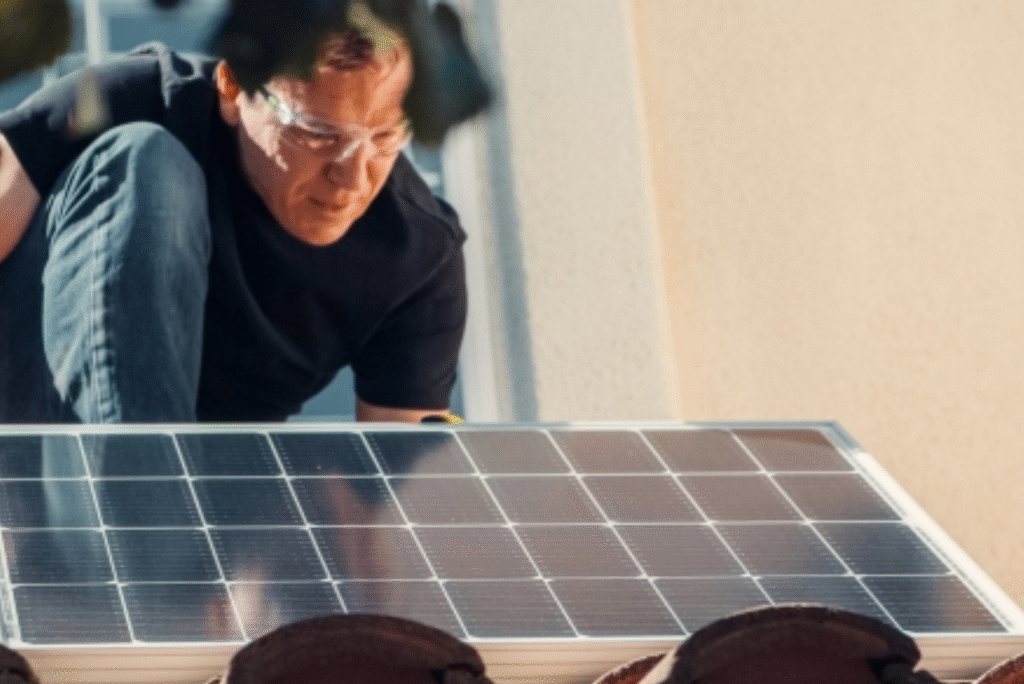
Which Solar Panel is Best For Homes Home Blogs Popular Posts All Posts Blog Seasonal Maintenance Tips for Solar… October 6, 2025 Solar Water Pump vs Regular… October 6, 2025 Rooftop Solar vs Ground-Mounted Solar October 6, 2025 Choosing the Best Solar Panel… October 6, 2025 Power Your Future with KLK Ventures Pvt. Ltd. Delivering reliable solar solutions for a sustainable tomorrow. Switch to clean energy and save with us today. Contact US The 21st-century world is becoming focused on reversing the wrongs of human actions. The extensive use of exhaustible energy sources has caused a horde of environmental problems. In this gloom, the brightness of solar energy can be our perfect saviour. Solar panels are one such practical application that makes use of this concept. By extracting energy from the rays of the sun, we can drive a number of daily or industrial objects. This is sure to reduce the load over rapidly depleting coal or natural gas resources. KLK Ventures with its multitude of services offers the best motivation to incorporate this clean and green energy into your daily life. types of solar energy are often used in industrial plants or big factories to achieve their goal but it can equally be incorporated into your homes. Solar energy is pollution free and solar panels are very easy to connect with the home set-up. It is also more secure.Solar power systems don’t require a lot of maintenance and care. A timely repair and inspection over a dozen months will ensure long durability.In times of heightened prices, solar panel installation will be a boon for your house as it will give way to reduced electricity bills.Solar energy is used as a better and more efficient substitute for electricity. Anything run by electricity can be simultaneously run by energy stored and accumulated via solar panels.Solar energy in a way can generate electricity or heat by harnessing the thermal power of the sun. For better results, solar circuits are connected to the electric circuits in households.Solar energy can power inverters and air conditioners, both of them being appliances of immense importance to today’s lifestyle.Within your house, you can perform small tasks like charging phones or upgrading to solar lighting for your home sweet home.Solar energy has been applied successfully to result in appliances like solar cookers, solar geysers, etc. These types of solar gadgets can assist in water heating or ventilation. Which Solar Panel is Best For Your Home? Solar panels come in four major types as discussed above. Since this form of energy is being accepted into the social structure, depending upon the scale and expected output, different types of solar panels can be installed in different places and situations. For domestic use or household purposes, the type of solar panel which is most popular is that of Monocrystalline panels. Monocrystalline panels have the highest efficiency and offer great power capacity. They can easily reach over 20% efficiency and generate 300-400 watts of power. In areas of high temperature, these panels are more likely to perform better than other solar panels. Experts believe they also last longer. A present-day purchase of these solar panels is expected to accompany your home for the next couple of decades. The monocrystalline solar panels are also available in different ranges. Depending upon factors like your budget, estimated needs, scope of use, environment around your habitat, etc; you can decide which solar panel is best to bring the gifts of solar energy. The only glaring disadvantage these panels have is the cost of initial purchase. The productivity of these solar panels increases greatly depending upon the amount invested. Other panels like Polycrystalline panels are much cheaper but compromise the efficiency and output. Why is KLK Ventures a Good Choice? When adopting a new and unknown technology to your home, the company of KLK Ventures works towards providing you and the environment with the best with the help of exceptional services it provides. From the start to all the way until the end, we take care of our customers and our products. Our experts work hard to ensure their knowledge about solar energy and other aspects like solar constant comes to be of help to you in picking out the best-suited solar system for your household. We offer installation services accompanied by regular maintenance and routine checking generally yearly. It goes without saying that our designs for your homes will bring you the joys of solar energy while protecting the environment and your financial pockets. We offer both on-the-grid and off-the-grid solutions to our customers. KLK Ventures in short is the storehouse of quality and guarantee.
How Do Solar Panels Work?
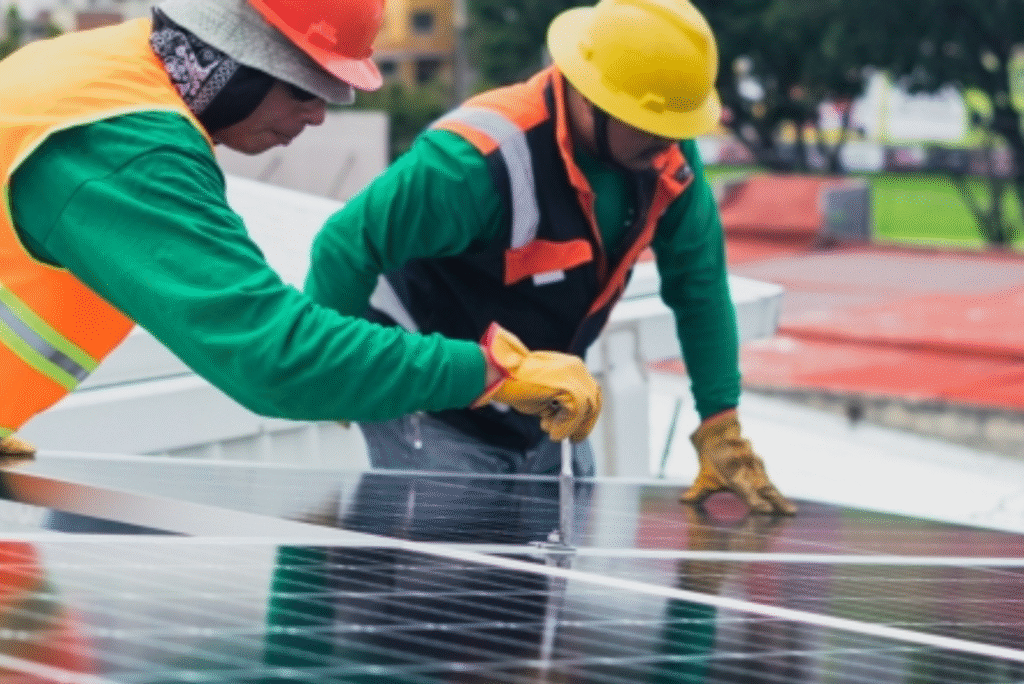
How Do Solar Panels Work? Home Blogs Popular Posts All Posts Blog Seasonal Maintenance Tips for Solar… October 6, 2025 Solar Water Pump vs Regular… October 6, 2025 Rooftop Solar vs Ground-Mounted Solar October 6, 2025 Choosing the Best Solar Panel… October 6, 2025 Power Your Future with KLK Ventures Pvt. Ltd. Delivering reliable solar solutions for a sustainable tomorrow. Switch to clean energy and save with us today. Contact US It is common knowledge that the Sun serves as a viable energy source. You may already have ideas on how to utilize the energy from the Sun to improve the environment for future generations. Resources are quickly being used up in this hurried age we live in, thus we have to be careful with what resources we utilize. Solar Panels are the godsend. With the help of this innovation, the sunlight is transformed into energy. By doing so we are saving the environment while also meeting our most urgent requirements. Today, you will most likely see solar panels everywhere on the rooftops and on the fields which is geared toward a better tomorrow for all of us. The panels may save the environment by using green energy, but the issue is how does solar energy work? how is this solar energy transformed to electrical energy which can then be utilized as electricity or be cherished in the form of thermal energy? In straightforward terms, Photovoltaic Cells are what solar panels are composed of and they are activated by photons when they come into contact with them. This blog will concentrate on Solar panels, the types of solar panels, and how they function. What Are Solar Panels Made Of? Silicon Solar Cells These cells play a crucial role in the production of electric power from solar energy. When joined together, these cells can function as a panel that collects solar energy. Two forms of cells are used: Monocrystalline and Polycrystalline Solar Cells. Glass LayerThis constitutes an additional essential part. To shield solar cells from the adverse elements like rain, dirt, and dust, the glass used in solar panels is robust and transparent. EVAAn encapsulating material that aids in holding the cells together. It provides a bonding connection between the silicon cells and the glass layer, thus ensuring safety. Anti-Reflective CoatingThis covering is applied on the surface of the solar panels which is designed to optimize sunlight absorption by minimizing reflection. Metal FrameMetal Frames or Aluminium frames are strong and supplement the necessary support for the solar panels. BacksheetThis provides electrical insulation and protection against electrical shocks. Junction BoxThis contains the wiring connections needed for the functioning of solar panels. The box also protects the wires from getting wet, damp, or damaged. Understanding the Working of Solar Panels Solar panels are created by connecting a number of photovoltaics together solving the issue. The basic unit with this ability is a silicon composed cell known as the photovoltaic cell. But, more panels mean more energy output. The energy that is produced is a direct current (DC) electricity. Now, that combination is empirical magic in its own right. So what civilizations did we spawn? All of them would indeed use the sun disk as the focus light. So, as the name suggests, it is ideally suited to with the panal against the sun and it will gather energy overnight. Because it is not supported by many appliances today, the Direct Current (DC) that is generated is passed through a machine called an inverter which transforms it into Alternating Current (AC). After that, it is sent into to be utilized by households, business, or fields and even kept for later use. Different Types of Solar Panels Some of the most common solar panel types are as follows: 1. Monocrystalline PanelsThey are the black solar panels that are the most developed and high in efficiency from all the categories. They are purely made up of silicon and they provide more than 400 watts of power. These panels have a life expectancy of between 30-35 years. 2. Polycrystalline PanelsThese panels as the name suggests are composed of several silicon crystals and are formed using the process where the silicon fragments are melted and placed within a mould then cooled and trimmed to form a panel. In addition to that their composition along with their square shaped gives them a pleasing light blue color and are not too expensive. 3. Thin Film PanelsWhen it comes to the modern category of solar panels the thin film panels would come under it. These contain Cadmium telluride (CdTe), Amorphous silicon (a-Si) and Copper indium gallium selenide (CIGS) rather than silicon as a composition. The panels are placed between two conductors as a protective measure alongside using glass which encloses the panels allowing the size to be altered as per the demands of the customer which also impacts the material that was used. 6 Advantages of Installing Solar Panels 1. Friendly to the EnvironmentSolar panels harness energy from the sun which means that they don’t contribute to environmental pollution. For this reason, these solar panels are classified sustainable. Therefore, choosing to utilize solar panels is a smart approach to conserving the planet. 2 Cost-effective After a solar panel is installed in a property, there is little maintenance to be done. The one maintenance done is a cleaning, which is only carried out every couple of years by professionals. Solar panel inverters also have to be replaced at times, but that is a mildly costly venture. There is also a warranty also provided with the solar panel, alongside an advantage of easier maintenance with the evolving technology. 3. Applicable Everywhere Nowadays, solar panels are being used in homes to power household appliances and in factories to generate electric energy and even aid in field irrigation. The energy created allows appliances to be charged, water to be boiled and so much more. 4. Cost Efficiency Solar panels assist in reducing the expenditure in the energy bills. This financial assistance is one
Types Of Solar Energy
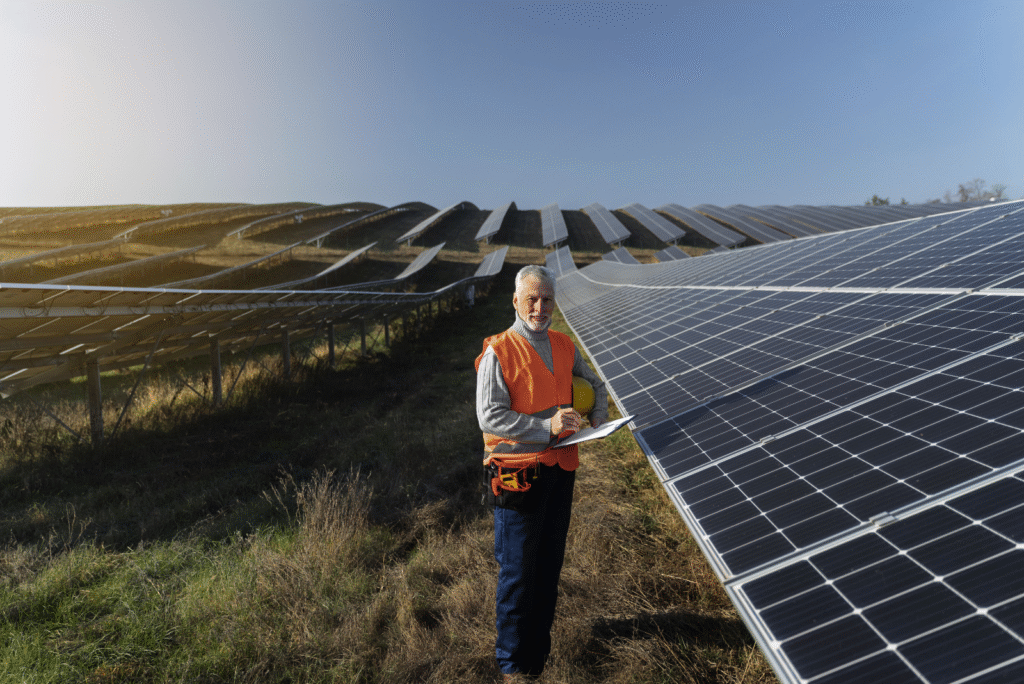
Types Of Solar Energy Home Blogs Popular Posts All Posts Blog Seasonal Maintenance Tips for Solar… October 6, 2025 Solar Water Pump vs Regular… October 6, 2025 Rooftop Solar vs Ground-Mounted Solar October 6, 2025 Choosing the Best Solar Panel… October 6, 2025 Power Your Future with KLK Ventures Pvt. Ltd. Delivering reliable solar solutions for a sustainable tomorrow. Switch to clean energy and save with us today. Contact US With the world rapidly changing, interest in renewable resources is growing more and more. There are different ways people are turning to help themselves as well as the environment. Solar Energy is one of those beneficial ways out of the never-ending vicious cycle of using depleting energy sources. The Sun being a vital source of renewable energy offers sustainable and environmentally friendly alternatives to fossil fuels. Knowing the different types of solar energy serves to inform people of the best options available to them for the accurate utilization of this priceless resource. So what actually is solar energy? Solar energy is the radiation from the sun responsible for generating heat and electricity. The ever-evolving technologies present harness this energy for different purposes which include generating electricity, for commercial or industrial use and in daily life. Different Types of Solar Energy Exploring the types of solar energy enables one to determine the best choice for electricity needs, heating, or even energy storage, thus making the use of solar power a strategically beneficial investment for the clean future. Solar Photovoltaic (PV) Energy Solar energy is trapped through photovoltaic (PV) cells or solar thermal collectors. These PV cells help in converting sunlight directly into electricity. When sun rays fall on the cells, it creates a flow of electric current. You will commonly find this technology in solar panels installed in places using up solar energy like rooftops or farms. Solar Thermal Energy Another way of making good use of solar radiation is through Solar thermal technology. It involves trapping and concentrating sunlight to generate heat. This heat is then further used for heating purposes or converted into electricity. This further divided into two types High-Temperature Solar Thermal: You will generally find the use of them in large-scale power plants to generate electricity.Low-Temperature Solar Thermal: These are often used in places like homes or buildings for small tasks like heating water or generating electricity for lamps. Concentrated Solar Power Mirrors like a plane and parabolic mirrors are arranged to achieve the directing and converging of sun rays. Lenses like Converse lenses are also used. The mirror will force the rays to a receiver which in turn heats a fluid. The steam obtained is used to drive turbines producing energy. The best part of it is that it can store the heat energy for cloudy days or nighttime. Passive Solar Energy This refers to the use of sun rays directly to heat the required surface without incorporating any technologies or mechanical systems. The innovative architecture and design itself suffice for the tapping of heat energy. Buildings and places are designed in a way they absorb and are exposed to plenty of sunlight. This involves the use of glass facing the sun to absorb heat or other thermal materials. Hybrid Solar Energy As the name suggests, hybrid solar energy mixes two or more types of the above-mentioned solar energy systems to create the best-suited one for you. For example, concentrated solar energy is often merged with others to increase productivity or customise a system that best caters to needs. Applications of Solar Energy Solar energy is the need of the hour. It’s helpful to overcome issues of global warming to a large extent. This concept can be applied varyingly. The applications of solar power are broad and adaptable which makes it easily usable across various areas of a home, business, or manufacturing facility. 1. Due to solar energy electricity is generated which is vital in today’s world. This energy is used to power small houses or organisations. 2. Solar energy has been adapted to be used for running appliances like solar cookers, solar geysers, etc. Assists in water heating and ventilation. 3. Solar lighting can be used not only for homes but factories, offices, street lights, etc. Solar-powered pumps can be used by farmers to pump water in their fields. 4. Solar energy can be stored in batteries to add the advantage of portability and make it accessible despite odd hours and places. 5. Solar energy used as a solar furnace is good enough to operate industrial work of melting metals, producing energy at a large scale. Air conditioners can also be powered with this. 6. Solar energy can be used to charge electric vehicles, safeguarding the environment. Solar power can be used to power big generators. 7. From the smallest tasks like charging phones to driving big-scale turbines for power synthesis, solar energy can meet most of the ends. Benefits of Solar Energy Renewable and Abundant Due to the sun being the source, the energy supply is inexhaustible. It is abundant and you won’t run out of it as long as the earth has the sun shining. Easily Accessible As the sun shines almost everywhere on this planet, solar energy is easy to access. Especially in remote areas where it might be difficult to get other means of development, the sun is always a good option to consider. Environmentally Friendly Solar energy does not lead to the emission of harmful gases or pollutants which helps reduce carbon footprint. Solar energy is a better alternative to the depleting resources which cause harm to the environment. Economic Benefits Manpower is needed for projects so when it comes to setting up these big solar power plants people are needed. All of this provides job opportunities to people. Independent Source Solar energy is sufficient on its own to operate the desired system. It doesn’t rely on other energy sources, hence retaining its renewable and eco-friendly features. Cost-effective Investment in solar energy is a one-time golden decision. Apart from the initial
Solar Constant
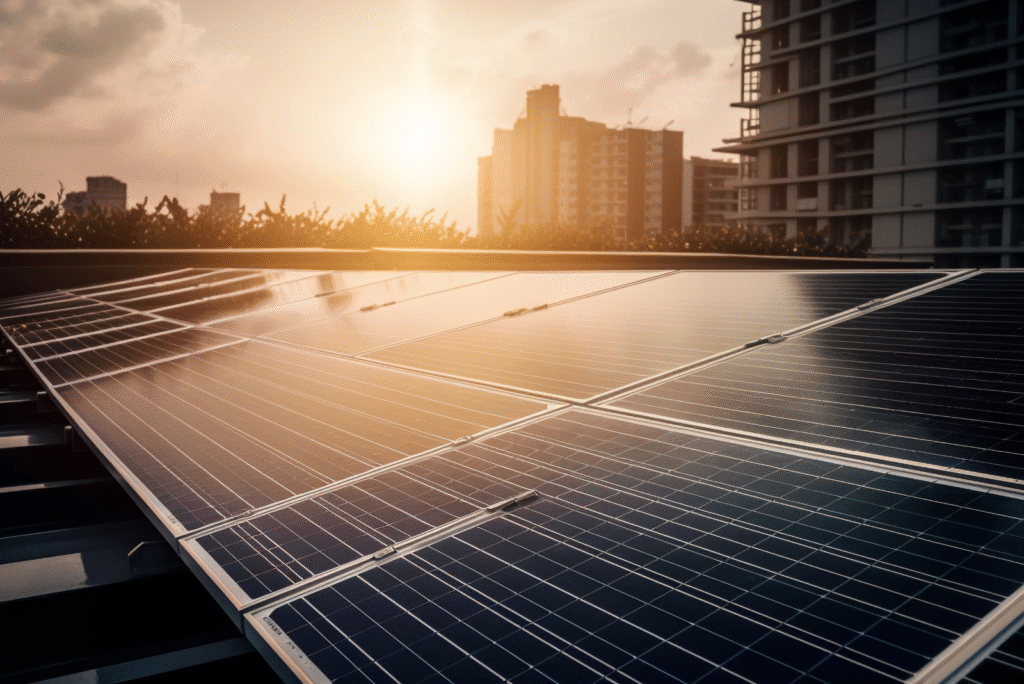
Solar Constant Home Blogs Popular Posts All Posts Blog Seasonal Maintenance Tips for Solar… October 6, 2025 Solar Water Pump vs Regular… October 6, 2025 Rooftop Solar vs Ground-Mounted Solar October 6, 2025 Choosing the Best Solar Panel… October 6, 2025 Power Your Future with KLK Ventures Pvt. Ltd. Delivering reliable solar solutions for a sustainable tomorrow. Switch to clean energy and save with us today. Contact US Utilising non-conventional sources of energy is made simple in our advancing world with the use of innovative technology but it surely is a fairly complex science. Solar energy uses and processes the sun’s power to harness usable energy forms. The rays of the sun carry along with them the required radiation which gets converted to other types of energy. Every sun ray carries some amount of electromagnetic radiation in it. At KLK Ventures the solar services that are provided are well versed in solar panels that make use of solar radiation phenomena and the solar constant as utilized in the solar panel business. t’s crucial to understand the workings of this energy-producing process. Hence, for those interested in adopting this clean and green renewable source, it becomes even more important to know the estimated solar radiation that will be received. Solar Constant becomes a good way to explain this scientific phenomenon. Understanding the term Solar Constant Solar constant in simple terms is the amount of solar energy a given piece of area is receiving at a distance of 1 Astronomical Unit (roughly the distance from sun to Earth, i.e. the distance that ray will travel to reach our green planet) from the sun. The factors of area and time are also often considered. The rays of the sun or light for that matter, depict both electrical and magnetic properties. Since solar rays are carriers of electromagnetic radiation, essentially what solar constant is measuring is the flux density of these radiations, the Flux being anything that passes through a surface and its concentration when measured is the flux density. The solar constant is often denoted by the notation of GSC. However, unlike what we all think by hearing the word “constant”, it isn’t exactly true for this case. Unlike the constants used in physics or maths, it is more like an average of values. These values measured at different times of the year give slightly different results because the distance from the sun doesn’t remain fixed throughout. The current average value of the solar Constant is 1.361 kilowatts per square metre at the solar minimum and 1.362 kilowatts per square metre at the solar maximum. Since our environment at Earth’s surface is affected by factors like air resistance, the solar Constant is measured generally by the satellites orbiting our planet. Variation in Solar Constant: The value of the solar constant experiences a slight variation in its measurement contrary to it otherwise being named ‘constant’. However, the variation is something of a natural phenomenon that takes place because of the two major bodies that are involved in the process: the Sun and the Earth. That being the more simplified version of putting the variation forward, however, it depends on certain features of the two bodies involved- the sun’s luminosity besides the distance between the two bodies and the earth’s distinct rotation around the sun. Both these points can be understood as explained below: How does the Sun’s Luminosity cause variation in the value of the solar constant? The sun’s luminosity is presented to be 3.86 x 10^26 watts however only some of this is captured by the earth’s surface that comes to the equal of 0.000000045%. The energy that is utilised in the solar energy capturing and harvesting process approximates 1370 watts per square metre of the earth’s surface. The distance between the two bodies contributes to this difference. Another smaller variation that comes into play is in the total luminosity of the sun which is believed by various researchers to have changed by about 1% in the past 30 years. The variation has been measured abroad using radiometers over the years through numerous satellites. The power yield of the sun’s energy is believed to be varying which affects the solar constant over vast gap years as it is believed to be increasing 10% every billion years. How Does Earth’s Orbit Affect Variation in Solar Constant? As generally all are aware the Earth is present in the solar system at a slight tilt in its centre that changes over time, along with this tilt the consequential factor is the characteristic elliptical orbit that the Earth performs around the sun. The solar constant’s value varies -+3% because of the elliptical orbit of the earth. The distance of the earth also varies in this factor as when in January’s first week the distance is lesser and smaller and the distance is larger in July’s first week affects the solar radiation received during these times. How does Solar Constant Become Important? The solar constant is generally important for all individuals conscious about the environmental health of the planet as it measures the solar radiation and is an important factor that affects the climate of the planet. KLK ventures thus provide a green and resourceful installation of solar solutions to minimize any harm to the environment. A solar Constant proves of value for measuring the quantity of radiation that will reach the earth’s surface. In easy words, it’s the rate of electromagnetic radiation available in 1 square metre of surfaces like solar panels. It provides us with the intensity of energy received as raw material to our device per second. As stated above, the power of the sun that we have with us to process is close to 1360 watts per metre square per second. It proves to be of importance for solar panel devices as one can be sure of the amount and value of solar energy that is captured and we at KLK Ventures facilitate solar solution installations that efficiently utilize these phenomena in its
